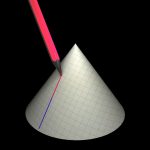How many different kinds of black holes are there?
Once they have settled down, there are actually only very few different kinds of black hole – find out which, and how black holes shed other distinguishing marks.
An article by Piotr Chrusciel
The collapse of a body to form a black hole can be a very dynamic and complicated event. But once the dust has settled, the evolution has played itself out and the system has calmed down, how many different types of black holes are there?
How many kinds of black hole?
This question is addressed by the so-called “black hole uniqueness theorems”. Even if we restrict ourselves to the matter and interactions ordinarily considered in astrophysics (for which the only long-range interactions are electromagnetism and gravity), leaving more exotic possibilities aside, there could be lots of different black holes. In fact, one might think there could be as many different black holes as there are ways of producing them: The collapse of an object shaped like a cube could lead to a cube-shaped black hole, the collapse of a cigar-shaped or disc-shaped lump of matter to black hole cigars or disc-shaped black holes, and so forth, as sketched here:
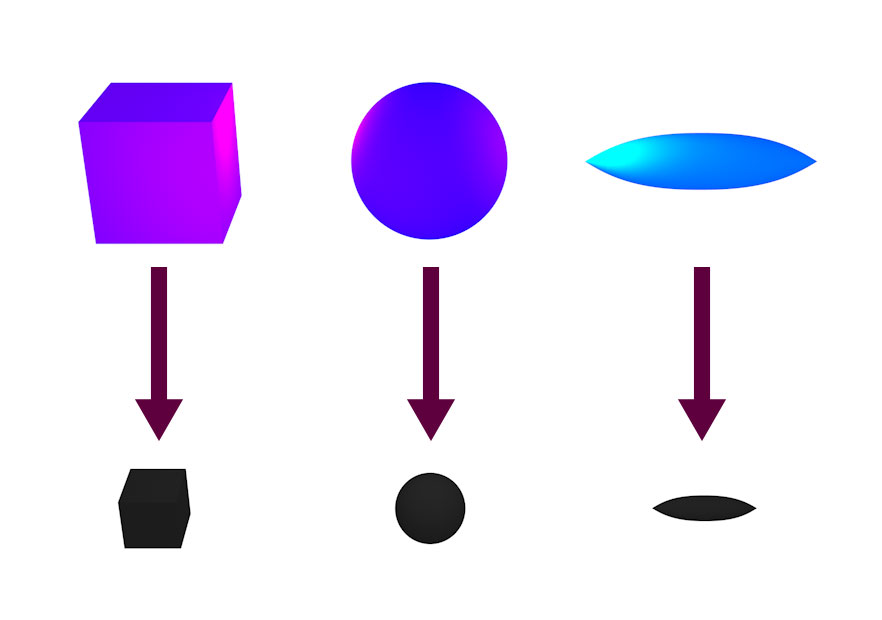
But as it turns out, in the long run, black holes are much more simple. They can be completely described in terms of a few parameters: the total energy, angular momentum (roughly, “how fast the black hole rotates”) and (of less interest to astrophysics), electric charge of the black hole. Once these parameters are chosen, the model universe – the way that spacetime geometry is distorted around the black hole – is determined completely. Sphere, cube or cigar – they all collapse to form a very simple kind of black hole that retains no traces of the original shape:
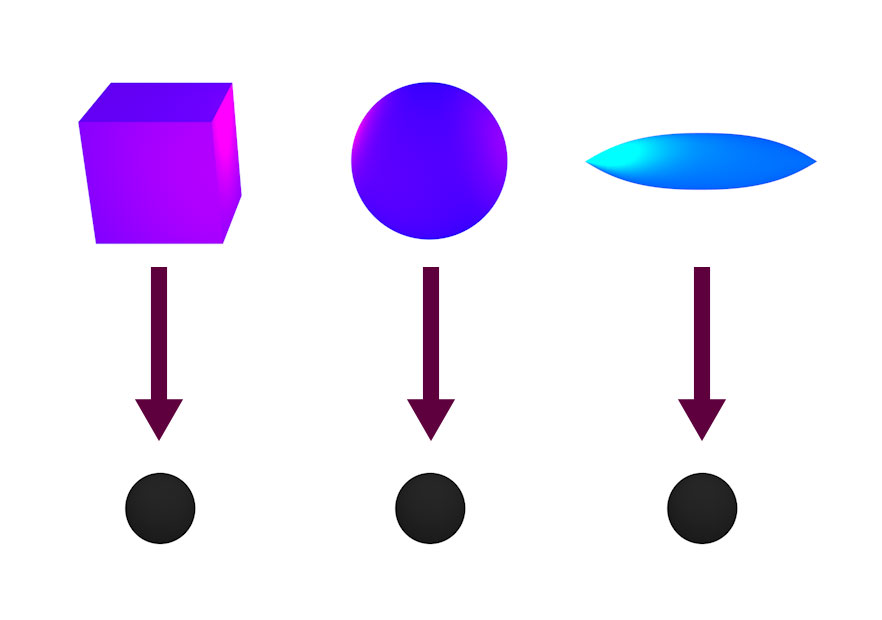
This striking property of black holes has been popularized as “the no-hair theorem” by John Wheeler (with the term itself invented by an anonymous member of the audience of one of Wheeler’s lectures). The name alludes to the fact that only very few parameters are needed to describe those solutions – apart from the values of those parameters, black holes have no distinguishing characteristics (no “hair styles”).
How do black holes lose their hair?
So how do black holes become simple? How does a cigar-shaped object that collapses to form a black hole lose all its cigar-like properties? In general relativity, there is a natural mechanism for simplifying the complicated geometric structure of certain regions of space: The emission of gravitational waves can carry away complicated features, with the waves either escaping into deep space or being swallowed by the black hole.
While a wide variety of features can be “radiated away” in this manner, there are exceptions. For instance, electric charge cannot be radiated away at all since neither the gravitational nor electromagnetic radiation carries such charge. More subtle restrictions apply to how much of the total mass or total angular momentum can be carried off (quantities for which there are so-called conservation laws).
All in all, the gravitational waves obey a rule set down in T. H. White’s novel The Once and Future King for a fictional society of ants: “Everything that is not forbidden is compulsory”. The gravitational field radiates away everything that can be radiated away. In consequence, the end state is uniquely characterised by a bare minimum of quantities: The final energy (equivalently, the final mass), and angular momentum, as well as possibly electric charge, with no additional features.
A gallery of simple black holes
So what are the different types of simple black holes that are stationary, in other words: that have settled down into an unchanging final state?
Let us start with vacuum black holes – black holes surrounded by space that is completely empty of all matter.
The simplest stationary vacuum black holes are the spherically symmetric ones. In fact, a theorem by J. T. Jebsen from 1921 (independently re-discovered by George D. Birkhoff in 1923 and nowadays named after him) shows that all spherically symmetric black holes are stationary, and they all belong to a family of solutions discovered by Karl Schwarzschild as early as 1916. The members of this family are distinguished by different values of a single positive parameter m. The value of m corresponds to the mass of the black hole, schematically:

The Schwarzschild solution is a special case of a family discovered by Roy Kerr in 1963, describing the most general stationary vacuum black hole. Such black holes are characterized by their mass m and angular momentum J, schematically:
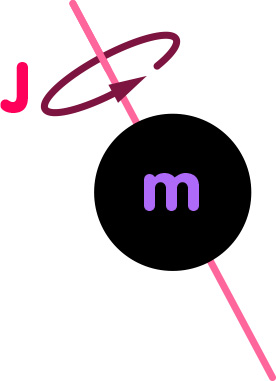
If we take a Kerr black hole and set its angular momentum parameter to zero – corresponding to a black hole that does not rotate at all – the result is once more a Schwarzschild black hole.
The proof that these are indeed all vacuum black holes has a long history, initiated by Werner Israel in 1967, with contributions by Brandon Carter, Stephen Hawking and several other researchers.
Next, we can look at black holes that carry electric charge. These are not vacuum black holes, since the surrounding space is now filled with an electric field. In the context of general relativity, such fields are a form of matter – the associated energy is a source of gravity.
Stationary, electrically charged black holes are described by a a family of solutions which was found independently by Roy Kerr and Ted Newman in 1963. Black holes of this type are characterized by their mass m, angular momentum J, and electric charge Q:
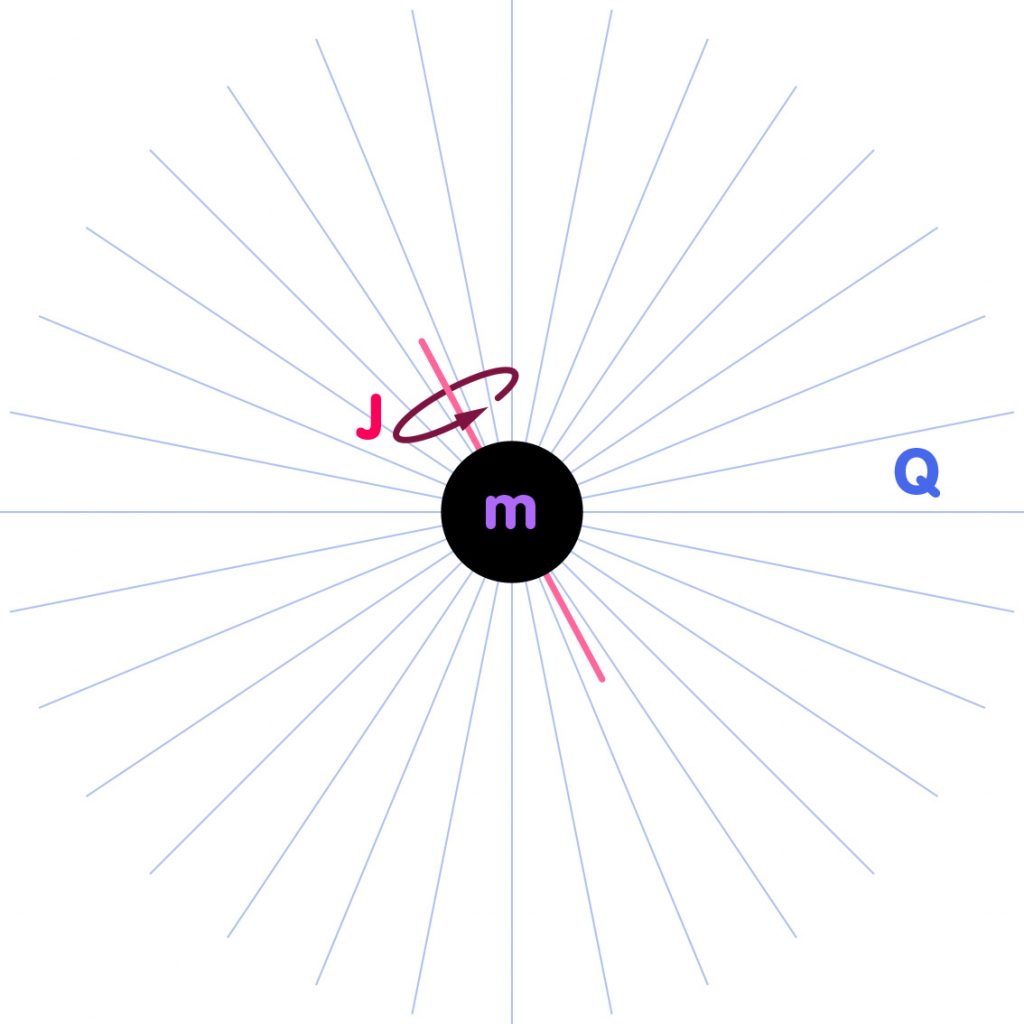
The uniqueness proofs have been extended to cover these solutions – and there we have them, the distinguishing features of black holes: mass, angular momentum, and electric charge.
Back to astrophysics
Strictly speaking, the uniqueness theorems describe lonely black holes that have had an infinitely long time to settle down into a stable, truly stationary state. But at least approximatively, they should apply to more realistic situations as well, which differ from the simple model situations in two respects: First of all, the black hole in question is not an isolated object in an otherwise empty universe, but merely an isolated object in the depths of space. Secondly, it has not had an infinitely long time to settle down, but merely a long time compared to what it takes to “shed its hair” in the form of gravitational waves.
This is good news: Astrophysicists can expect even realistic black holes to be described by the well-known Kerr solution, provided that enough time has passed for them to radiate away any distinguishing features. And for the researchers hunting for gravitational waves, black holes “shedding their hair” promise attractive sources.
Further Information
Relativistic background information for this Spotlight topic can be found in Elementary Einstein, in particular in the chapter Black holes & Co..
A related question of uniqueness versus variety – how many different kinds of empty, stationary model universes Einstein’s general relativity theory permits – is explored in the spotlight text The many ways of building an empty, unchanging model universe. Further related Spotlights on relativity can be found in the category Black holes & Co.. A concise technical introduction to the “no hair theory” can be found in the e-print gr-qc/0502041.
Colophon
is a professor of gravitational physics at the University of Vienna. His research covers a wide range of mathematical topics related to Einstein’s equations.
Citation
Cite this article as:
Piotr Chrusciel, “How many different kinds of black holes are there?” in: Einstein Online Band 04 (2010), 02-1013




